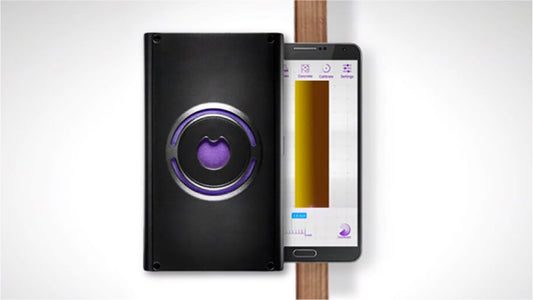Tracing plumbing lines behind drywall is crucial for any home renovation or repair project that involves drilling or cutting into walls. Understanding the location of pipes can prevent costly damage and ensure safety. This guide will cover effective methods and tools for locating plumbing lines behind drywall.
Why Trace Plumbing Lines?
- Avoid Damage: Prevent accidental drilling or cutting into pipes, which can cause leaks, water damage, and costly repairs.
- Ensure Safety: Identifying the location of pipes helps maintain the structural integrity of your plumbing system.
-
Plan Renovations: Accurate knowledge of pipe locations is essential for planning renovations, installations, or repairs that involve walls.

Tools and Materials Needed:
- Walabot wall scanner
- Stud finder with metal detection
- Measuring tape
- Pencil
- Flashlight
- Safety goggles and gloves
Methods to Trace Plumbing Lines
- Use a Walabot Wall Scanner:
- The Walabot wall scanner is an advanced tool that uses radio frequency technology to detect pipes, studs, and other objects behind drywall. It provides a visual representation of what’s inside the wall, making it easier to locate plumbing lines accurately.
- Employ a Stud Finder with Metal Detection:
- Some stud finders come with metal detection capabilities. These devices can identify the presence of metal pipes behind drywall. Move the stud finder slowly across the wall and mark the detected pipe locations.
- Listen for Pipe Sounds:
- Turn on a faucet to run water through the pipes. Place your ear against the wall or use a stethoscope to listen for the sound of running water. This can help identify the general location of pipes.
- Look for Visible Clues:
- Check for signs of plumbing on both sides of the wall. Look for fixtures, access panels, or pipe entry points that can give you an idea of where the pipes run.
- Consult Blueprints or Building Plans:
- If available, consult the blueprints or building plans of your home. These documents often show the location of plumbing lines and can provide a useful reference.
FAQ Section
How do I find plumbing pipes behind drywall? Use tools like the Walabot wall scanner or a stud finder with metal detection capabilities. These devices can help you accurately locate pipes behind drywall.
Is there a tool to detect pipes in walls? Yes, tools like the Walabot wall scanner and stud finders with metal detection can detect pipes in walls. These tools provide visual or audio indications of the presence of pipes.
How do you find pipes in a wall before drilling? Before drilling, use a wall scanner or a stud finder with metal detection to locate pipes. You can also listen for water sounds or consult building plans to identify pipe locations.
Can a stud finder detect pipes? Yes, some stud finders come with metal detection capabilities that can identify metal pipes behind drywall.
Tips for Tracing Plumbing Lines:
- Use Multiple Methods:
- Combining different methods, such as using a wall scanner and listening for water sounds, can improve accuracy.
- Mark Detected Lines:
- Use a pencil to mark the locations of detected pipes on the wall. This helps create a visual reference for safe drilling or cutting.
- Double-Check Before Drilling:
- Always double-check the marked locations with a second method or tool to ensure accuracy before drilling or cutting.
- Consider Professional Help:
- If you are unsure about locating plumbing lines or if the task seems too complex, consider hiring a professional plumber to assist.
Tracing plumbing lines behind drywall is essential for safe and effective home renovation or repair projects. By using the right tools and techniques, you can accurately locate pipes and avoid costly damage. For more DIY tips and tools, visit Walabot's website.




